|
Getting your Trinity Audio player ready...
|
Director André Øvredal’s (Trollhunter) summer horror movie The Last Voyage of the Demeter fleshes out the chapter in Bram Stoker’s Dracula that plays out unseen aboard a London-bound merchant ship. This “Alien set on the high seas” tale follows a mysterious terror that decimates the ships crew of the ship. Days are safe, but sundown brings the terrorizing thirst of the vessel’s vampire stowaway, who emerges in darkness to bite a few necks before retiring to his makeshift cargo coffin.
As expected, not all the visuals could be achieved practically in this supernatural Gothic tale. This resulted in approximately 1,000 shots being digitally augmented by MPC and RISE under the supervision of Brad Parker (Loki, Ad Astra).
After principal photography, the original look of the iconic vampire went through an additional conceptualize phase. “We worked with Aaron Sims Creative, the ILM [Visual] Art Department and a number of other people to create various images that represented what André had in mind and wanted to do in terms of the various stages of Dracula throughout the story,” explains Parker. “There were no new magical elements added to him, but at the same time some creative liberties were taken. We put a lot of effort into this creature that starts out emaciated and humanoid. But then as he feeds, Dracula gets stronger, bolder and transforms into his winged self.”
Bloodsucking Features
Performing the role of Dracula on set was Spanish actor Javier Botet, who is 6’7” tall. “He gave us a great foundation for what Dracula’s locomotion could be and his basic attitude throughout these various stages in the film,” says Parker. “There was also a great prosthetic suit and face. We rifted off of that and ended up designing something that went a lot further. So, in most cases we ended up replacing what was there, but it was fantastic reference.”
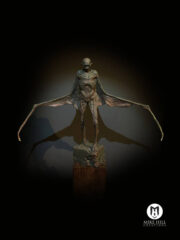
Motion tests were conducted at Mr. X which has been rebranded as MPC. “André would describe to me certain feelings or motions that he had about a scene. Then, we would look at what the actor had done and then talk about how things could be improved or tweaked or milk every ounce of drama and terror out of a moment,” explains the VFX supervisor. “We let the animators run free and shoot tests of themselves on video cameras, which were then cut together and laid over the edit of the film to see how those performances played.”
The director would then pick and choose which tests he liked best. “Once we honed in on what that performance could be, the team was able to do motion capture to get the general gist of the motion,” adds Parker. “But at a certain point, Dracula starts to move in a way that is beyond what a human being can do without incredible stunt rigs; that’s where hand animation would takeover. It was an iterative and creative process all along the way. Every step we were adding and adding.”
The fateful merchant ship travelling from Varna, Bulgaria to Whitby, England is a character in its own right. “The interiors and exteriors of the boat set were gorgeous,” states Parker. “We worked with the team at RISE and they created most of the digital set and ship extensions, the water and storms. It’s safe to say that 95 to 98 percent of what you see on the ship other than the deck is digital. The way this was shot there wasn’t much bluescreen and we didn’t have anything to pull keys off of. When I came aboard the show, I looked at it and there were two paths we could take: We could either roto everything and then put the CG world behind it or obliterate the whole top of the deck, most of rigging and just keep the deck of the ship and the performers; that [second path] gave us the best look and was also the most economical.”
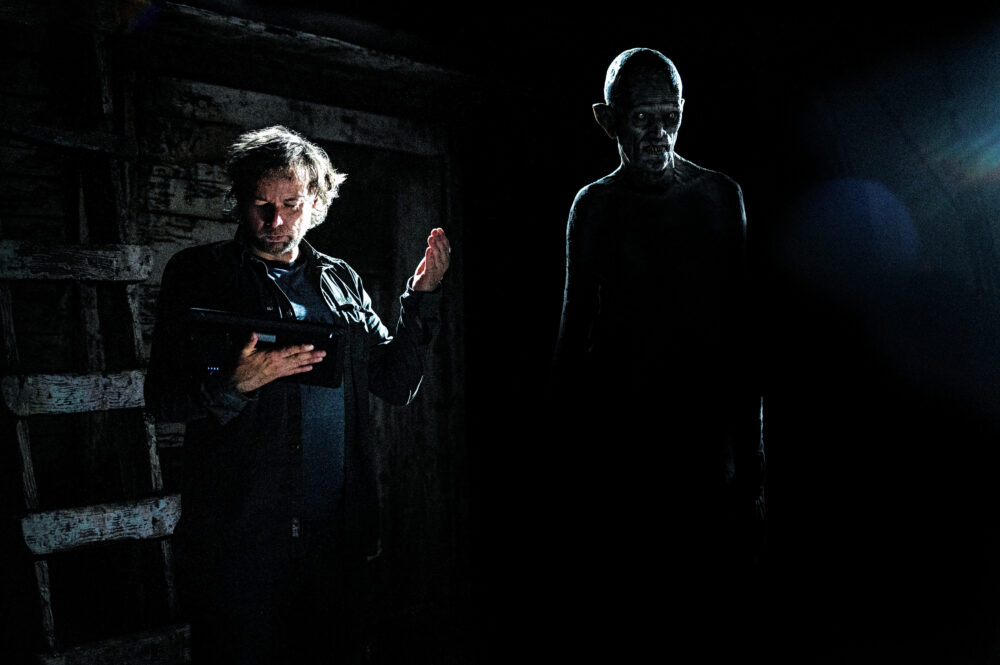
Only three shots in the oceanic horror tale utilized practical water. “Things needed to be heavily art directed,” remarks Parker. “They weren’t able to shoot at the time of day they wanted to. The ocean surface didn’t have the attitude or feel that André was necessarily after. At the end of the day, replacing everything was the best place to go to create a fully art directable environment for this film to live in.”
“If you compare the basic tank work to where we ended up, the film is so much more dynamic because we’ve got these massive storms and waves,” he says. “They weren’t able to agitate the water in the tank, so it was mostly calm and there were some reflections issues.”
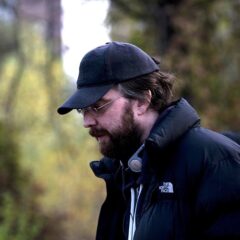
‘RISE did one shot in particular that is phenomenal, where the boat is literally crashing ashore. It’s 100 percent digital … there are no cheats in the way those things were put together.’
— VFX supervisor Brad Parker
Parker believes that RISE has taken the water rendering and simulation technology to a whole new level with The Last Voyage of the Demeter. “Not only are there beautiful simulations of the water surface and spray off of cresting waves and full interactivity of that spray, but there is also on the surface sea foam and that is fully independently simulated as well as a subsurface level of sea foam and dimensionality to the water,” he says. “Often digital water is about reflecting the light and the world down onto the surface; however, this you can actually see depth. That helped the believability.”
Avoiding the size and scale issues that would make the Demeter appear as a miniature was extremely difficult. “We went through a trial-and-error phase on the size of wavelets on top of big waves,” reveals Parker. “We had LiDAR of the ship so we knew how large that was and had a general sense of the size of the storm and the big rolling waves that we might create. But it comes down to the wavelets and micro wavelets within those that give you a sense of true scale of water. We came up with this recipe that in most cases would make it look believable. It’s the same thing with atmosphere in a big open world like that. When you have a set and then the entire world around it is this massive overcast environment, playing with the density of fog and how much you see through it, how far it transmits light and any kind of interactivity of that fog, contribute to making something feel real or not.”
From Digital Port to Doomed Destination
Being on land for Varna was the most straightforward aspect of the job. “There was a great set which was heavily extended by RISE and all of the other ships were added in along with the port and water,” states Parker. “In this day and age recreating or extending something like that is simple in comparison because you’ve got this great basis for lighting and a real environment that you can rift on and extend.”
At the conclusion of the journey, the Demeter is on fire, shipwrecked off the English coastline. “A portion of that wreck was built on location, and we ended up extending quite a bit of that, but it gave us incredible reference for what the wood looks like when it’s wet, broken and in the rain at night. Leading into that, RISE did one shot in particular that is phenomenal where the boat is literally crashing ashore. It’s 100 percent digital and has full on water simulation pushing a wake forward over the sand. The boat starts to shatter as it crashes against rocks, the sails are rippling, and rain is falling. Everything is fully and truly interactive. There are no cheats in the way those things were put together.”
Universal Pictures released The Voyage of the Demeter in theaters on August 11. The R-rated film is currently playing in territories worldwide and has generated $19.8 million in box office so far.


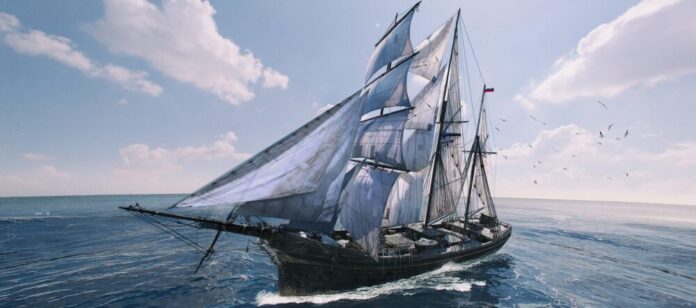
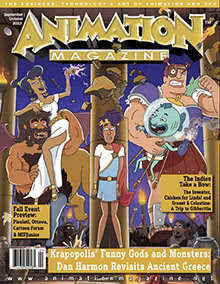
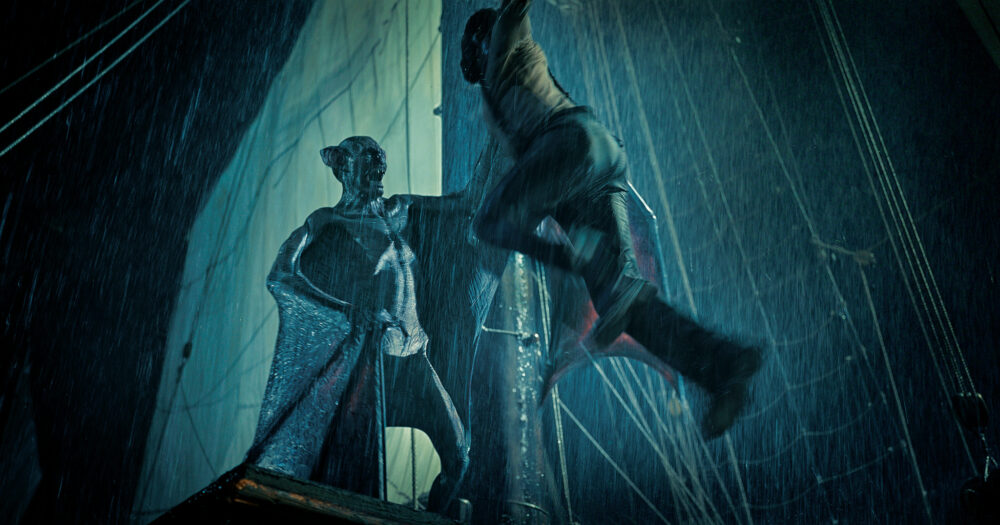
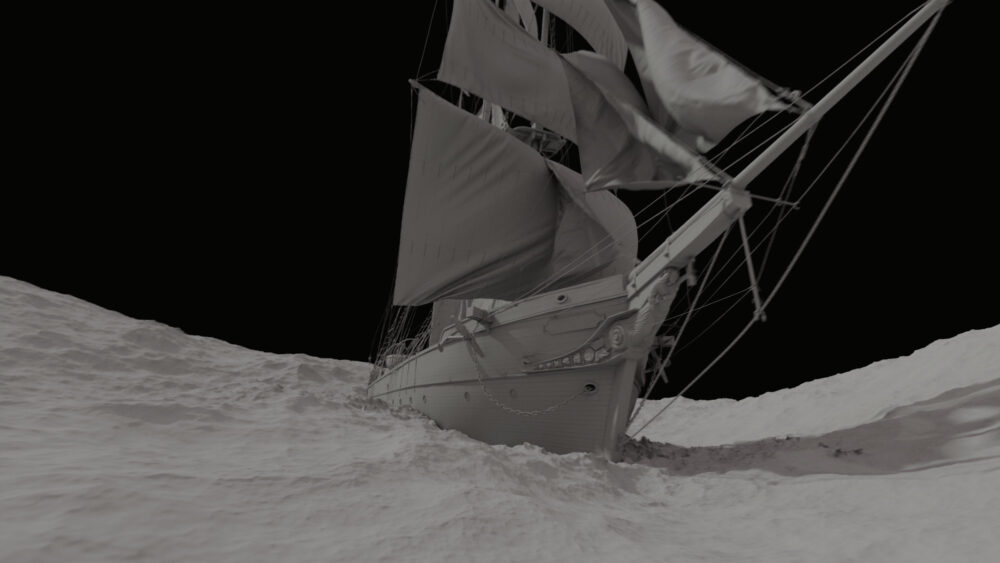
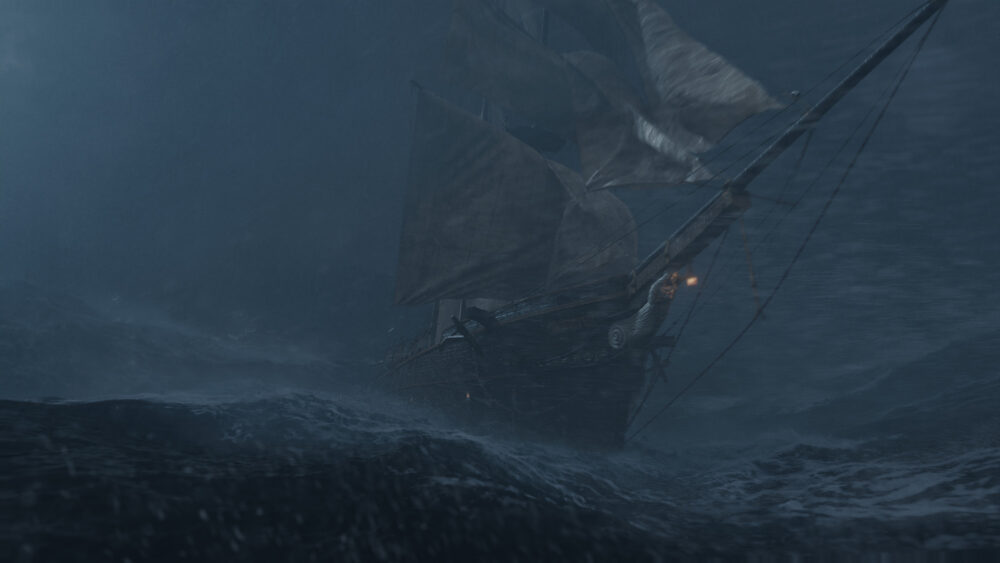

 Win a Funko X Lilo & Stitch Prize Pack!
Win a Funko X Lilo & Stitch Prize Pack! 
